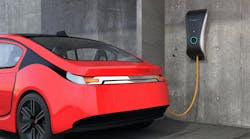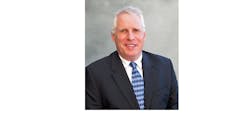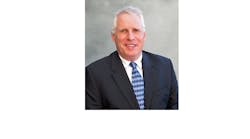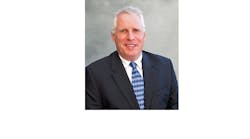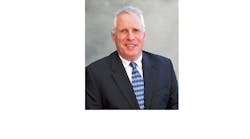This snapshot of the electrical distribution business offers a glimpse of the business as it is - and where it may go in the future. Part 1
In 2000, much as in the early 1900s, electrical distributors inventory a wide variety of the products needed to put together an electrical system, whether for a house, office building, factory or power plant. They bring in the materials in large quantity, then "break bulk" to resell them in the quantities ordered by the customer. They provide a local source of supply for the offerings of hundreds of manufacturers and combine the products of numerous manufacturers to fulfill the order. Daily and emergency delivery of the products is another key role. Distributors also extend credit to customers for the purchase of electrical supplies and offer information and training on electrical products and their applications. These basics remain as important today as when electrical distributors evolved as a type of business at the beginning of the 20th century.
Today, the product scope has broadened past electrical apparatus and supplies and construction materials to include fiber-optic cable, telecom products, motion control and factory automation. Many traditional products have evolved into an electronic rather than an electromechanical make-up.
As the 21st century gets underway, the service offering is accentuated by systems contracts, software, programming, electronic commerce, Web-based marketing and competition, a variety of competing channels of distribution, on-going consolidation of independent distributor houses into large chain distribution companies and an increasingly global nature of business.
Electrical distributors: Who they are. With the old SIC (Standard Industrial Classification) system replaced by a North American Industry Classification System (NAICS), electrical distributors (formerly SIC 5063) now can be found under two headings:
*421610-Electrical apparatus and equipment, wiring supplies and construction material wholesalers.
*4441902a-Electrical supply stores (retail) (under 444190-Other building materials dealers).
The new system defines our business as follows: "This industry comprises establishments primarily engaged in wholesaling electrical construction materials; wiring supplies; electric light fixtures; light bulbs; and/or electrical power equipment for the generation, transmission, distribution or control of electric energy."
The SIC system defined wholesalers as those establishments that sold primarily to business customers, while retailers were those that sold primarily to consumers. Under NAICS, all that changes: "The new wholesale- retail definition emphasizes what the establishment does, rather than to whom it sells.
"Retail establishments are primarily engaged in selling merchandise, generally without transformation, for end use. These establishments attract customers using methods such as advertising, point-of-sale location and display merchandise for ease of selection.
"Wholesale establishments are primarily engaged in selling or arranging the purchase or sale of: a) goods for resale, b) capital or durable nonconsumer goods, and c) raw and intermediate materials and supplies used in production.
"Wholesale establishments have most or all of the following characteristics: Wholesalers normally operate from a warehouse or office. These warehouses and offices are characterized by having little or no display of merchandise. In addition, neither the design nor the location of the premises is intended to solicit walk-in traffic. Wholesalers do not normally use advertising directed to the general public. Customers are generally reached initially via telephone, in-person marketing or specialized advertising that may include Internet and other means."
The net result is an "official" definition of a wholesale electrical distributor that does not jibe with industry usage or even with reality (has anyone run across a retail electrical distributor?) Any wholesaler with a lighting showroom would probably be classified as retail, even though 90% of the business goes out the back of the warehouse to contractor, commercial, industrial and other business customers.
The nature of the electrical distributor's business. Wholesalers, retailers, whatever you want to call them, electrical distributors structure their businesses to approach their markets in a variety of ways. Thirty years ago, specialization was almost unheard of; those that practiced it were considered mavericks and even outcasts. Today a growing number of distributors specialize in a type of product (like automation equipment or lamps) or a particular market (like utilities). Our research shows their numbers approaching 20% of the firms that could be classified as electrical distributors.
Some observers theorize that the electrical distribution industry is moving toward the "shopping center" model. Many late-20th century shopping malls consisted of a couple of big stores with a broad range of products as anchors. Between them, numerous specialty shops catered to a certain type of customer or narrow-focus product area.
Although specialization may be growing among electrical distributors, as the year 2000 opens, the majority of them still carry a full line of electrical products. Over half of them, however, specialize by type of customer or place a strong emphasis on one or more customer types.
Business orientation. The great divide in the electrical distribution business has traditionally seemed to be between industrial houses and contractor houses. In years past, specialists were thought of as outside the electrical distribution business, if they were thought of at all. Our recent research showed that business orientation is not a simple black-and-white issue anymore; many distributors focus on multiple markets. (For that reason, the percentages in the table "Business Orientation" do not add up to 100%; it's not an either/or decision for many distributors. They serve multiple markets.)
Only 7% of electrical distributors serve all markets with no particular emphasis. Although no previous research exists against which to compare these findings, in the last decade this editor has observed a deliberate shift by electrical distributors to industrial and factory automation markets, away from the light construction/small contractor market. This move has been spurred by the growth of competition for the small contractor market from retail home centers. That observation would seem to be borne out by the data from EW's recent survey.
In sum, electrical distributors serve a broad range of markets and customers, finding business in any aspect of (endeavor) business or industry where there is electricity in use. It encompasses a huge set of possibilities.
Most electrical distributors concentrate solely on electrical products. In fact, 84% only handle electrical supplies; 16% sell other lines or have another supply-type business along with the electrical, such as plumbing or industrial supplies, according to a 1999 Electrical Wholesaling survey.
Additional roles for distributors. Not all electrical distributors spend all of their time selling electrical supplies. According to EW research, about 19% of electrical distributors take on additional functions, such as motor repair or light manufacturing work. Others among the 19% get into more controversial roles, serving as a manufacturers' rep on some lines or acting as a contractor. (Some distributors do more than one additional function.) However, the vast majority (81%) of electrical distributors stick to the business of electrical apparatus and supplies distribution. Only a handful of the 16% in other supply businesses overlap with this 19%, so it appears safe to say almost 30% to 35% of electrical distributors do something in addition to the wholesaling of electrical supplies. In some cases, the electrical supply business might be secondary to the other activity.
Electrical distributors' sales volume. In 2000, sales through wholesale electrical distributors were forecast to reach $83 billion, according to Electrical Wholesaling magazine. These sales figures are benchmarked to the 1992 Census of Wholesale Trade (S.I.C. 5063) and updated annually through surveys conducted by Electrical Wholesaling.
Electrical distributor sales forecasts. With the U.S. economy still cranking along, albeit with some fits and starts, electrical distributors came across as an optimistic bunch in the fall of 1999. They expected a strong finish to 1999 and a relatively good growth year for 2000.
In a survey conducted in July 1999 by Electrical Wholesaling magazine, electrical distributors forecast that 1999 sales would finish 8.0% ahead of 1998. Looking ahead to 2000, they anticipated a 7.1% increase. Both forecasts represented healthy growth for the electrical wholesaling industry. These forecasts made by electrical distributor executives may be optimistic, but are they realistic?
Over the last 10 years, certainly, annual sales growth for the electrical distribution industry has averaged 6.5%. However, during that same period, the industry has been operating in one of the longest peacetime economic expansions in the history of the United States, and many electrical distributors today may well have forgotten (or never experienced) the recessions of the 1970s and 1980s. Some economic theorists today argue that the United States has forged a new economic growth model, one that minimizes or even eliminates recession. Anyone taking bets? Tune in next month for the remaining predictions.
